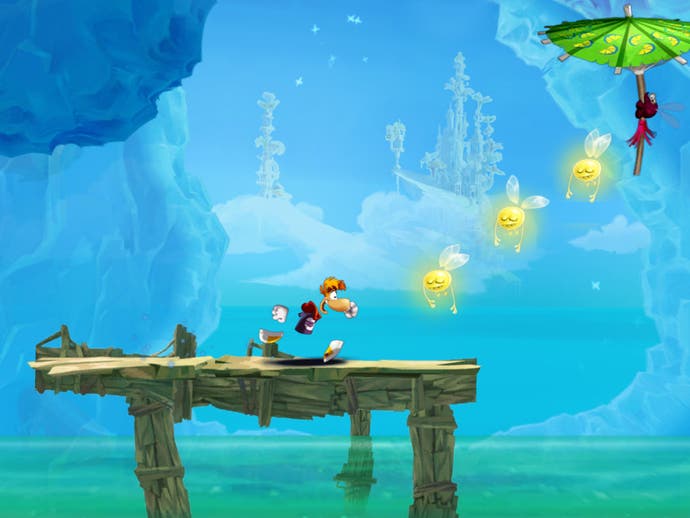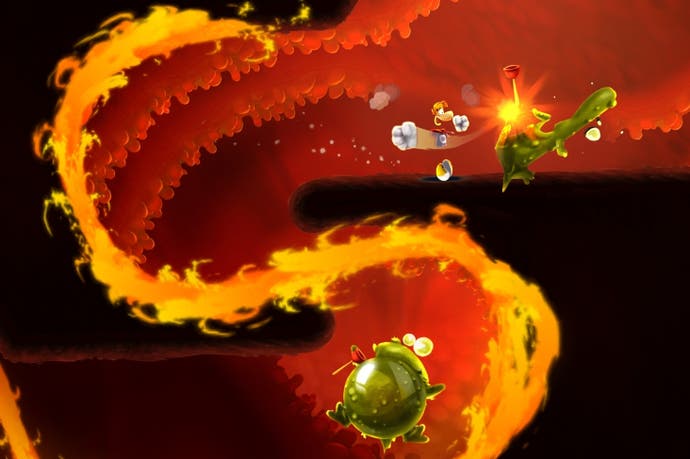Rayman Fiesta Run review
Lum punch.
Much as the delightful Rayman Legends improved and evolved Rayman Origins, so too does Rayman Fiesta Run build on the solid foundations set down by last year's Rayman Jungle Run.
It's another mixture of rhythmical platformer and endless runner, then, but the biggest changes have been to the game's structure. Whereas Jungle Run divided itself up into short worlds, each built around one of Rayman's abilities, Fiesta Run takes its cue from social games like Candy Crush.
Wait, don't run off! It just means that progress through the game is via a snaking pathway, along which you can also see where your friends are up to. Dotted along the path are gifts, bonus characters and little offshoots containing new levels. The more glowing golden Lums you collect in each level, the further down the path you'll advance, unlocking more levels and so on. It's a change for the better, quite frankly, since it explicitly ties your success in the levels to your success in the game at large.
The levels themselves are as lovely as you'd expect, built once again using the same UBIart engine used to create the console titles. If anything, Fiesta looks even nicer than Jungle Run, its softer and more painterly style easier on the eye than the hard cartoon edges of its predecessor.

If the game stumbles, it's in the way the precision platforming translates to a touchscreen. With movement out of your hands, it's simply a matter of timing your jumps, glides and punches correctly, but the forced scrolling doesn't always gel with the Rayman style. Too often, you'll take one of two paths, only to discover the one you've chosen is the one without those precious Lums on it. In a console game, you could go back and get them, but here it means you can miss out on a perfect run through no fault of your own.
This issue is somewhat alleviated by a new power-up system, that lets you begin a stage with tweaks such as a second-chance giving heart or, most usefully, guide icons showing you where to jump and punch to collect every Lum. Of course, it's still down to your skill to actually keep up.
These power-ups are purchased using your collected Lums, and it's here that IAP creep in. You can buy additional Lums to restock, but since each level offers 100 of them, and you can replay them as many times as you like, there's no real reason to fork out extra to buy optional assists. As with any thoughtful IAP system, you do wonder what the point of it is, but better that than a Rayman game with cooldown timers and constantly depleting consumables.
Rayman Fiesta Run just misses out on the majesty of its parent games, sometimes tipping from pleasant frustration into genuine annoyance thanks to its endless runner DNA, but it's still one of the best translations of a console hit into a mobile format around.

